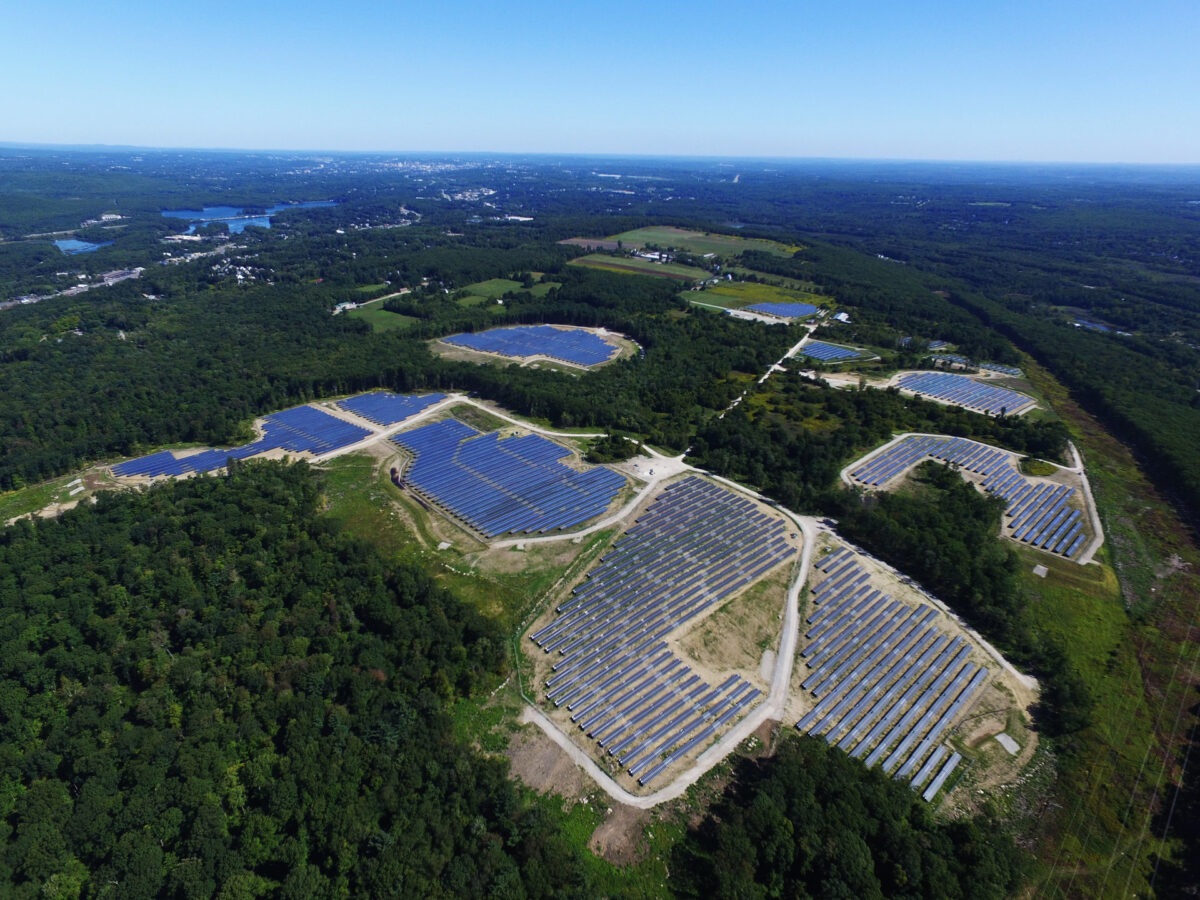Solar energy is a cornerstone of the global push toward a decarbonized economy in order to mitigate the worst effects of climate change. But the environmental outcomes of solar projects can vary vastly.
In Massachusetts, a small and densely populated state, open spaces come at a premium. This leads to forested and workable lands being purchased and developed for solar projects.
The Massachusetts Audubon Society released a report that showed the state has developed about 5,000 acres of natural and working lands for the purposes of solar development between 2010 and 2020. While the state has over 5 million acres of forest, the impact of this development is more than just the land area lost. Forests are powerful carbon sinks, as plants respirate by taking in carbon dioxide and releasing oxygen.
The 5,000 acres of development since 2010 has led to an equivalent carbon sequestration loss of over 500,000 metric tons of carbon. This is comparable to the annual emissions of 100,000 gas powered vehicles. More than half the ground mount solar capacity in the state has been developed on destroyed forest land, said the report.
This loss of stored carbon works against the state’s goals of reaching net-zero emissions by 2050. In order to reach that target, solar will need to expand five to seven times its current cumulative capacity by mid-century.
The report said that if current development trends continue, over 4.6 million metric tons of sequestered CO2 would be stripped from the earth, which is equivalent to about 75% of the annual emissions of the City of Boston.
The unprecedented development offers an opportunity to place a value on the difference in environmental outcomes of a project. The Audubon Society recommends encouraging a mix of rooftop solar, solar parking canopies, and solar developed on landfills and other contaminated sites, and defunct golf courses.
The report assessed that with legal zoning setbacks incorporated, about 35,000 acres of Massachusetts’ 55,000 parking lots could host solar parking canopies, leading to a 9.9 GW total solar technical potential. When combined with nearly 120,000 acres of viable rooftop space, parking canopies and rooftops can combine for over 30 GW of solar potential.
The report recognizes that rooftop and parking canopy development is more expensive than ground-mounted utility-scale systems. Reaching Massachusetts’ mid-century climate goal while following the Audubon Society’s mid-range land preservation scenario, which still allows for about 98,000 acres of land development, would cost about $900 million more than the business-as-usual scenario.
However, the report argues that when a valuation is placed on the stored carbon, this development scenario could lead to $940 million to $980 million in benefits.
“Forests directly absorb carbon from the atmosphere — that’s what photosynthesis is. They are a technology for carbon removal,” said Jonathan Thompson, senior ecologist at Harvard Forest and report co-author.
“But we also need to remember that forests are far more than buckets of carbon. They are providers of clean air and clean water. They are where we recreate. They’re where we find solace and they are home for biodiversity,” said Thompson.
The report from Massachusetts Audubon included several policy recommendations for the state:
- Eliminate state incentives for solar projects on valuable natural and working lands while increasing incentives for solar on rooftops and developed lands
- Invest in reducing the labor and permitting costs of rooftop and canopy solar projects
- Support large-scale landowners in building solar on rooftops and near existing transmission infrastructure
- Launch a statewide planning effort to integrate clean energy and transmission infrastructure into the process of land development
- Fund permanent protection of Massachusetts’ highest-value natural and working lands
This content is protected by copyright and may not be reused. If you want to cooperate with us and would like to reuse some of our content, please contact: editors@pv-magazine.com.









Choice: Drive cars on fossil fuels and continue waste to energy generation and heat homes with natural gas and keep these forests or what? Agree they sequester CO2 but not enough to offset our driving and heating habits.
Your choice.